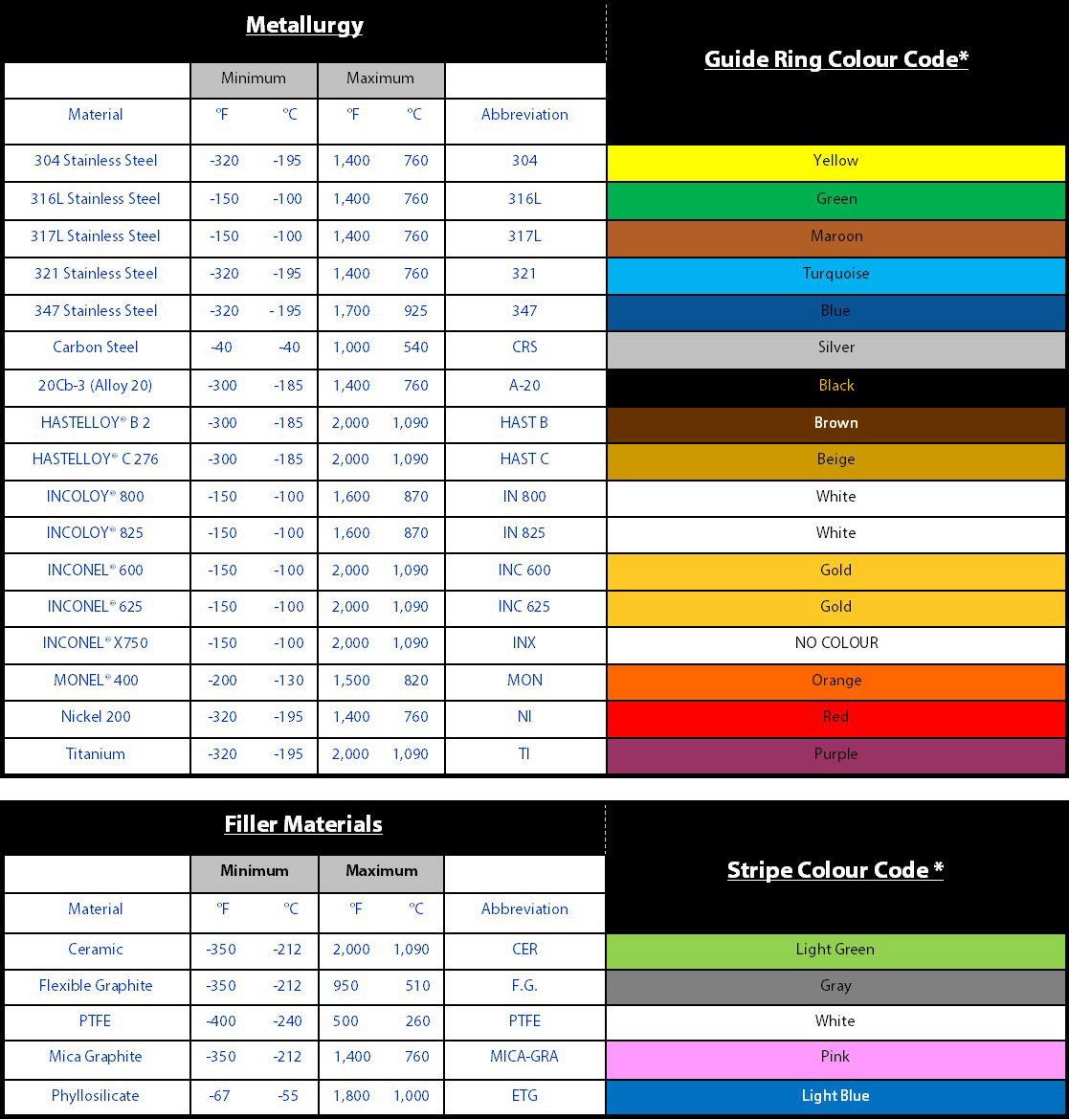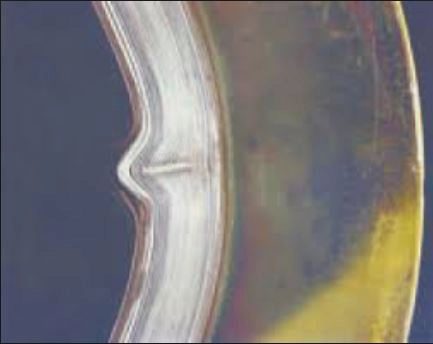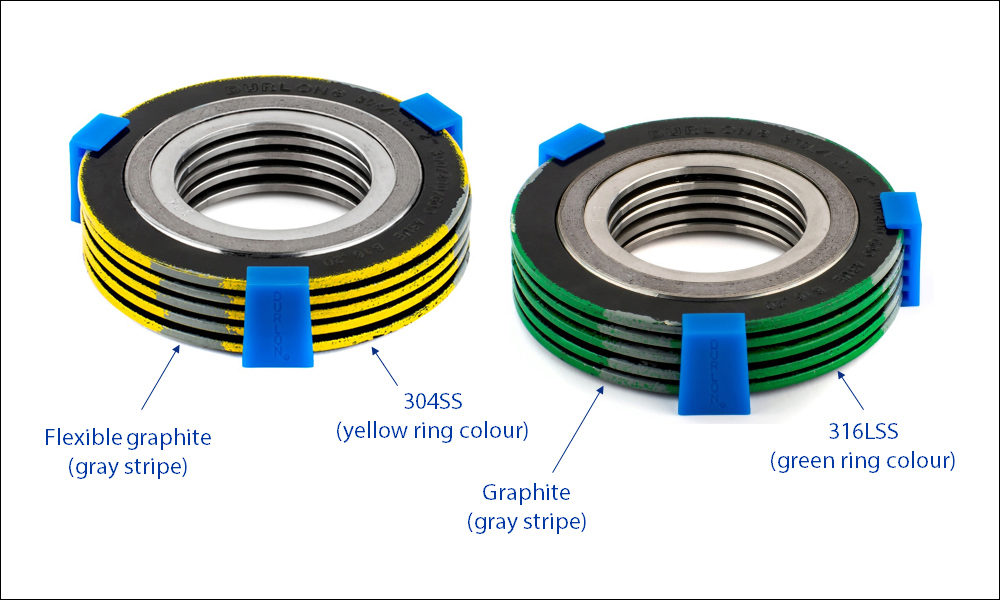Spiral Wound Gaskets – The Durlon Difference!
By: Chett Norton, C.E.T
November 3, 2015
Spiral wounds gaskets ( SWGs) are a great multi-purpose gasket used in piping systems throughout the world. They are somewhat inexpensive, durable and in most cases readily available (pending metallurgical and filler requirements). The good thing about SWGs is that they can be used in all pressure classes, 150# up to and including 2500#. The design of spiral wound gaskets makes them blowout resistant and well accepted within the industry as a “Fire Safe” type of gasket.
Are all Spiral Wound Gaskets the Same?
The general assumption with spiral wound gaskets is that they are all the same. This is both true and false. Now I am going to play devil’s advocate on this. The reason I answered true is because all standard size spiral wound gaskets are typically manufactured to ASME B16.20, which is a dimensional manufacturing standard covering Metallic Gaskets for Pipe Flanges – Ring-Joint, Spiral Wound, and Jacketed (Gaskets). Also included in the publication of this standard are grooved metal gaskets with covering layers, otherwise known as Kammprofile gaskets. The most recent revision was published in 2012, hence, the current standard reference of ASME B16.20-2012. This standard covers gasket dimensional sizes in accordance to ASME B16.5 or B16.47 pipe flanges as well as the construction, metal joining, centering ring, inner ring, gasket compression and marking (general, pressure class and colour code) of the gaskets.
However, to answer the direct question, “Are all spiral wound gaskets the same?”, my answer would be no they are not. The reason for this is that things such as metal quality, filler quality (density, grade, thickness) and whether or not the gaskets were made on machines that control both pressure and tension on the gasket winding while being manufactured, ultimately control the final quality of the spiral wound gasket.
Spiral Wound Gasket Identification
Spiral wound gaskets at times can seem to be very confusing with so many colours and stripes on them. However, it should be noted that using the ASME designation colour chart is pretty straight forward. The paint colour code system refers to the gaskets’ outer edge of the centering ring and the vertical stripes painted on the outer edge of the centering ring. The solid outer edge colour indicates the metal winding used and the vertical stripes indicate the filler used (see applicable charts below). Please note that the inner material should also match the winding material as noted in ASME B16.20-2012, unless specified by the user. For outer rings, the epoxy colour on the face of the rings is only brand specific, though some epoxies are more resistant to chemical attack and general atmospheric degradation. If the material of the centering ring is anything other than carbon steel, it will also be stamped on the ring.

Spiral Wound Gasket Constraints
The limiting factor in most cases for spiral wound gaskets is temperature. In general, it is the filler material that creates this limit.
Example:
For a 2” 300/400/600 spiral wound gasket construction of 304SS winding (760°C/1,400°F) and flexible graphite filler (510°C/950°F), the maximum temperature will be 510°C/950°F. This is governed by the flexible graphite filler even though the 304SS winding strip is rated to 760°C/1,400°F.
There are few exceptions to this rule and one of them is our Durlon® SWG DRI-ETG gasket. This gasket utilizes Durlon® HT1000® (Phlogopite Mica) material on both the ID and OD of the sealing element, while using super inhibited graphite in the middle of the sealing element for enhanced sealing capabilities. These layers of Durlon® HT1000® act as a heat shield or anti-oxidation layer and allow the gasket to seal up to 1,000°C/1832°F, where normal inhibited graphite is limited to approximately 565°C/1,050°F.
Benefits of Durlon® Spiral Wound Gaskets:
- All Durlon® SWGs in Class 150 & 300 are designed to seal at lower than standard loads, thus making it a low stress sealing gasket. Therefore you do not need to stock both standard and low stress sealing types of gaskets and can consolidate your inventory levels.
- All gaskets have been manufactured with inhibited graphite since January 2015. Inhibited graphite performs much better than standard grade. It allows you to extend your operating temperature to 565°C/1,050°F vs. 510°C/950°F. The rate of graphite oxidation at the higher temperatures is much lower which leaves more graphite to seal your application.
- All metals on gaskets made at Triangle Fluid Controls (TFC) are sourced from North America and the UK. This gives full traceability of materials as we provide MTRs for metal in the gasket windings and PMI testing for both the inner and outer rings (non-carbon steel). TFC can also provide this documentation free of charge.
-
- Large in stock inventory of specialty metals: 316Ti, 317SS, 321SS, 347SS, Hastelloy C276, Alloy 20, Alloy 400 (Monel), Titanium, Alloy 2205 (Duplex) Alloy 600/625/800 and many others. This allows for a short turnaround on non-standard gasket materials. In some cases next-day delivery for critical shutdown requirements.
__________——mjkldjklsdjhklghdkslhgbkhklgjsp;dlkp’lakk;ldzjrfklhgoiskhfkglhkdlrjhoiesujfpokjmpockqpoakfmpoqlmf,oor - Fillers available: Flexible Graphite (standard, inhibited & super inhibited grades), PTFE, Mica, HT1000® and Durlon® ETG (combination of super inhibited graphite with HT1000®). This availability of fillers allows us to seal basically any need or requirement from aggressive chemicals to high temperature applications found in today’s industries.
- Large in stock inventory of specialty metals: 316Ti, 317SS, 321SS, 347SS, Hastelloy C276, Alloy 20, Alloy 400 (Monel), Titanium, Alloy 2205 (Duplex) Alloy 600/625/800 and many others. This allows for a short turnaround on non-standard gasket materials. In some cases next-day delivery for critical shutdown requirements.
Spiral Wound Gasket Facts

- All gaskets should be supplied with an inner ring, unless the purchaser or end user specifies otherwise, as per ASME B16.20-2012 to help prevent inward buckling (see image).
- All PTFE filled SWGs shall have inner rings as per ASME B16.20-2012.
- For all other filler materials, inner rings shall be supplied in spiral wound gaskets in the below sizes/classes. (Higher bolt loads generated by the larger bolt diameter/quantity decrease the risk of inward buckling):
- NPS 24″ and larger in Class 900h
- NPS 12″ and larger in Class 1500
- NPS 4″ and larger in Class 2500
k
- Centering rings are not designed to be used as compression stops.
- Centering rings are carbon steel by default (epoxy coated or zinc electroplated to prevent corrosion), unless otherwise specified by the purchaser or end user. Carbon steel will not be stamped on the outer ring whereas materials such 304SS or 316SS will be.
Final Thoughts
In closing, spiral wound gaskets are still considered to be an existing technology or simple commodity. However, based on proper metallurgy selection and filler materials it can be a very innovative, engineered solution to today’s modern sealing challenges. So the next time you have to replace a gasket and you are unsure or have questions, ask yourself WWTGGD (What would the Gasket Guru Do?). You could also fill out the Gasket Application Data Form or call us (toll free) 1-866-537-1133.

